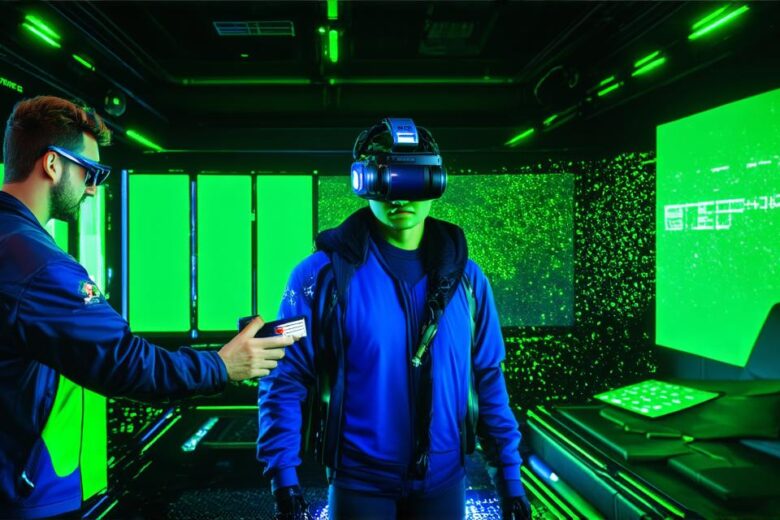Virtual augmented reality (VAR) refers to an immersive experience where a digital environment is overlaid on top of the real world. This technology allows users to interact with digital objects in a way that feels natural and seamless, as if they were really there.
Understanding Augmented Reality (AR)
Before diving into the world of virtual augmented reality, it’s important to understand what augmented reality is. AR is a technology that enhances the user’s experience of the real world by adding digital elements on top of it. This can include things like directions, 3D models, and animations.
One of the most popular examples of AR is Snapchat filters, which add fun graphics and effects to photos and videos. Other examples include Pokemon Go, which uses GPS data to create a virtual world overlaid on top of the real world, and IKEA Place, which allows users to see how furniture would look in their home before making a purchase.
Virtual Augmented Reality vs Traditional Augmented Reality
Now that we have an understanding of what augmented reality is, let’s explore how virtual augmented reality differs from traditional AR. While both technologies add digital elements to the real world, there are some key differences between them.
Virtual augmented reality creates a completely immersive experience, where the user is fully submerged in a digital environment. This means that the user’s physical surroundings are replaced with a virtual world, which can be customized and designed to fit their needs. In contrast, traditional augmented reality adds digital elements on top of the real world, but does not replace it entirely.
Another key difference is the level of interaction between the user and the digital environment. Virtual augmented reality allows for a more natural and seamless interaction, as if the user were truly in the digital world. This can include things like pointing, grabbing, and manipulating objects in the virtual world. In contrast, traditional augmented reality often requires users to interact with the digital elements using gestures or voice commands.
Real-life Examples of Virtual Augmented Reality
While virtual augmented reality is still in its early stages, there are already some exciting examples of how this technology can be used in a variety of industries. Here are just a few:

- Gaming: Virtual augmented reality offers an unprecedented level of immersion and interaction for gamers. Imagine being able to step into a game world and interact with the characters and environment in a way that feels completely natural.
- Education: Virtual augmented reality can be used to create highly engaging and interactive educational experiences. For example, students could use virtual reality to explore historical events or scientific concepts in a way that is both fun and informative.
- Healthcare: Virtual augmented reality has the potential to revolutionize healthcare by allowing doctors and nurses to interact with patients in a more personalized and effective way. This could include things like using virtual reality to simulate surgical procedures or providing remote support for patients who are unable to travel to a medical facility.
The Future of Virtual Augmented Reality
Virtual augmented reality is still in its early stages, but it has already shown immense potential for a wide range of applications. As the technology continues to evolve and improve, we can expect to see even more exciting examples of how virtual augmented reality can be used in the future.
One area where virtual augmented reality is likely to have a big impact is in the world of work. By allowing employees to interact with digital objects in a way that feels natural and seamless, virtual augmented reality could help to increase productivity and efficiency across a wide range of industries.
Another area where virtual augmented reality is poised to make a big impact is in the field of training and education.
